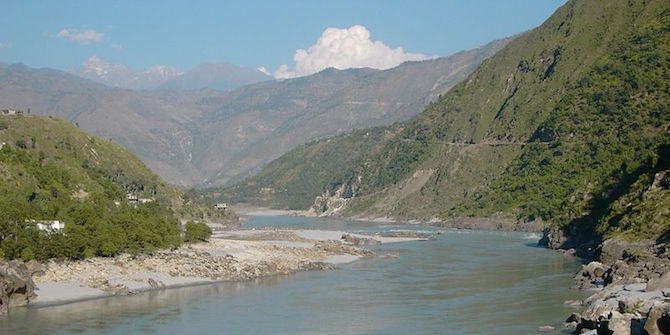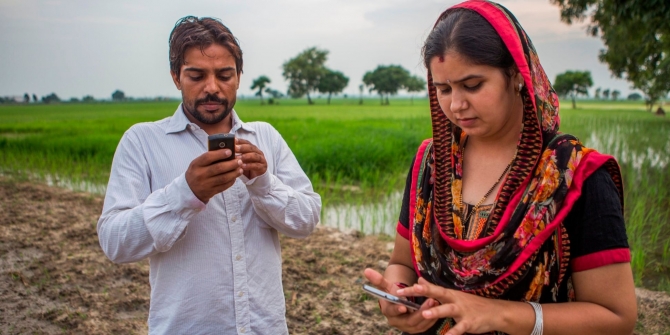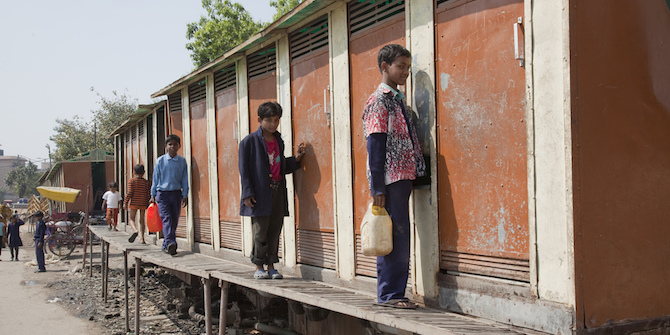Modi’s World, a collection of newspaper articles by veteran journalist C. Raja Mohan, traces how Modi’s foreign policy has compared with that of his predecessor and how it evolved during his first nine months in power. Raj Verma finds the book an easy read with great journalistic flair, but notes that this does come at the price of academic rigour.
Modi’s World: Expanding India’s Sphere of Influence. C. Raja Mohan. Harper Collins. 2015.
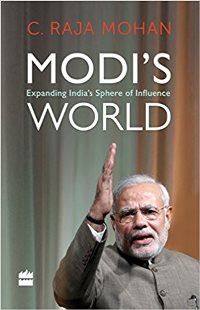 There are three images in international relations. The first examines the role of the leader or decision maker in foreign policy (FP) decision making and emphasises the personality, cognition and beliefs of the leader. The second examines the role of the state in FP with focus on the executive or government, state structure, elite perception and elite cohesion, role of bureaucracy, domestic societal actors and interest groups, social cohesion and political economy among others. The third looks at the level of external vulnerability in the anarchical international system due to the difference in the material capabilities or hard power (economic, political and military) between countries in the international system.
There are three images in international relations. The first examines the role of the leader or decision maker in foreign policy (FP) decision making and emphasises the personality, cognition and beliefs of the leader. The second examines the role of the state in FP with focus on the executive or government, state structure, elite perception and elite cohesion, role of bureaucracy, domestic societal actors and interest groups, social cohesion and political economy among others. The third looks at the level of external vulnerability in the anarchical international system due to the difference in the material capabilities or hard power (economic, political and military) between countries in the international system.
Modi’s World by Raja Mohan focuses on Prime Minister Modi’s cognition or background and his personality and how this has led to a change in India’s FP and diplomacy. Thus, it adheres to the first image. Raja Mohan also stresses the importance of “… a strong and stable government that emerged out of the May 2014 elections …” (p. 202), referring to the strong mandate and comprehensive majority for the Bhartiya Janta Party-led National Democratic Alliance government. Thus, it incorporates the second image. The international system, on the other hand, has been mentioned less than five times in the entire book.
The book is a compilation or amalgamation of columns and opinion pieces which Raja Mohan wrote for the Indian Express, a leading national newspaper in India, from September 2013 to March 2015. The columns from September 2013-May 2014 have been added to the columns from May 2014 to March 2015 to highlight the continuities and discontinuities in the domestic and external realms between the Manmohan Singh and Narendra Modi governments. The author has been a pre-eminent journalist in India for a significant length of his career.
The book presents key insights into the evolution of Indian FP, FP decision making and numerous factors – endogenous and exogenous – which affect India’s FP and relations with other countries. For instance, the legacy of Nehruvian foreign policy (coined after the first Prime Minister of independent India) which led to non-alignment and strategic autonomy is discussed, alongside the role of socialist ideology, political parties and structure of the executive, as well as the bureaucracy and FP elites. The chapters also highlight India’s bilateral relations with Pakistan, the US, China and countries in India’s immediate neighbourhood, East Asia and the Indian Ocean Region. Unfortunately, Russia is missing. The most interesting chapter for readers might be Chapter 10 which focuses on India’s cultural diplomacy and soft power – yoga, Bollywood, Buddhism and civilizational ethos of India – and Modi’s attempts to use these to enhance India’s diplomacy.
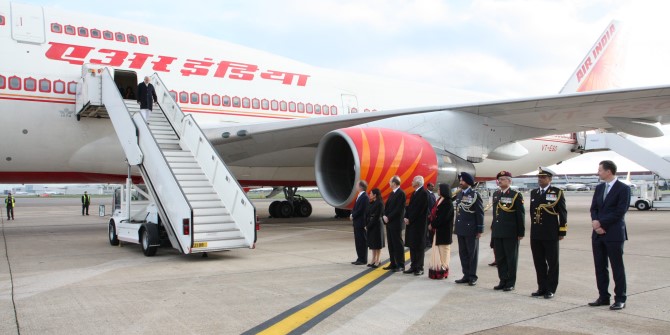
Raja Mohan avers that India’s FP under Modi is to a great extent a continuation of India’s foreign policy under Prime Minster Vajpayee (1999-2004) and Manmohan Singh (2004-2014). However, he writes that Modi has also undertaken new initiatives which have led to major changes, due to his cognition. His ‘Guajarati pragmatism’ has resulted in transactional relations with countries with the intention of making India a great power, or in Modi’s own words ‘a leading power’, thus adding new words in international relations (and political science) lexicon. Modi wants to enhance India’s comprehensive national power by increasing India’s economic growth rates through economic reform, increasing foreign direct investment and the modernisation of India’s armed forces. However, the author also points out that it is difficult to bring about drastic changes in FP of a large country like India due to both internal and external factors discussed above.
According to Raja Mohan, Modi has laid emphasis on regional diplomacy to achieve great power status. This is premised on five foundations or principles. First, India should reclaim primacy in South Asia. It should become an uncontested regional power before it can become a great power. Second, Modi has increased contact with India’s neighbours and has visited these countries more frequently than any Indian premier, especially since 1991. Third, unlike his predecessor, Modi has accepted that the central government will play an important role in conducting foreign policy and has been willing to overcome political opposition both within his own party and outside. Fourth, the Indian diaspora has an important role to play in investing in India and augmenting India’s image abroad. Modi has also understood the importance of Indian Ocean region and role played by countries such as Mauritius, which have a significant Indian diaspora. Fifth, Modi believes that India’s relations with great powers such as China and the US will improve significantly if the sub-continent is unified and economically prosperous.
Raja Mohan asserts in the preface of the book that nine months is “enough evidence to make an informed assessment of his foreign policy” (p. viii). Comparing what the author predicted with events in the two years since the book was published, his assessment is very close to the mark. Raja Mohan asserted that Modi will take a hard stance against China on the territorial dispute but will like to improve relations and have more Chinese investment. Modi has taken a hard stance on China’s border transgressions as evidenced by the recent events in Sikkim (at the border between India, China and Bhutan). When China hardened its stance on India’s membership to the Nuclear Suppliers Group and UN Security Council, Modi reciprocated by deciding not to endorse China’s ‘Belt and Road Initiative’ despite repeated overtures from China. As predicted, Modi has sought to establish closer relations with the US and Japan. India signed the logistics agreement with the US in 2016 (which had been in limbo for almost a decade) and has continued with the Malabar military exercises involving India, Japan and the US. Raja Mohan correctly pointed out that Modi will lack a coherent policy with respect to Pakistan. The terrorist attacks on the Air Force base in Pathankot and Army base in Uri in 2016 led to curtailment of dialogue between the two countries, but India has been unsure on whether to resume dialogue and what objectives it wants to achieve from any such dialogue. The author also correctly asserted that Hindu extremist groups would become more vocal and dominant and the government would have difficulty in controlling them. This is evidenced by the recent lynchings of Muslims accused of consuming beef or transporting/smuggling cows, which has led to increased polarisation in the Indian society and fears of a Hindu Rashtra instead of a secular India. However, it is too early to say whether this will affect India’s relations with Muslim majority countries in Asia and Africa.
The lucidly written Modi’s World is an easy read. It is one of the first study of India’s foreign policy under Modi. The book has a journalistic flair and lacks academic rigour. The reader should therefore bear in mind what the book is but more importantly what it is not.
This article gives the views of the interviewee, and not the position of the South Asia @ LSE blog, nor of the London School of Economics. Please read our comments policy before posting.
About the Author
Raj Verma is the Series Editor of ‘Routledge Series on India-China Studies’. He is the author of ‘India and China in Africa: A comparative perspective of the oil industry’.



